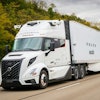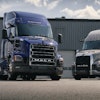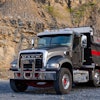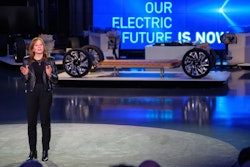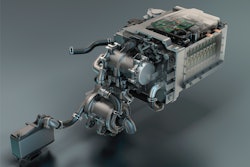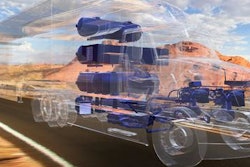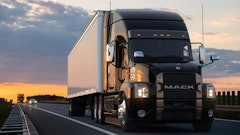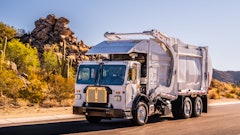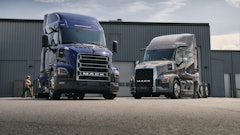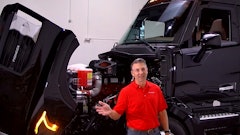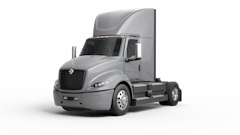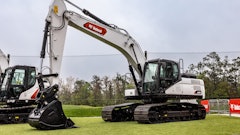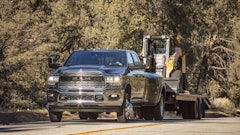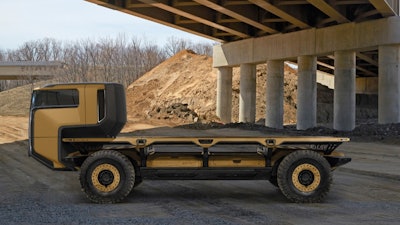
 The Silent Utility Rover Universal Superstructure (SURUS) platform was designed as a foundation for a family of commercial vehicles that leverage a single propulsion system (powered by hydrogen fuel cell) integrated into a common chassis.
The Silent Utility Rover Universal Superstructure (SURUS) platform was designed as a foundation for a family of commercial vehicles that leverage a single propulsion system (powered by hydrogen fuel cell) integrated into a common chassis.
SURUS leverages GM’s newest Hydrotec fuel cell system, autonomous capability and truck chassis components to deliver high-performance, zero-emission propulsion to minimize logistical burdens and reduce human exposure to harm. Benefits include quiet and odor-free operation, off-road mobility, field configuration, instantaneous high torque, exportable power generation, water generation and quick refueling times.
Fuel cell technology is a key piece of GM’s zero-emission strategy.
The U.S. military under guidance of the U.S. Army Tank Automotive Research, Development and Engineering Center (TARDEC), has evaluated the Chevrolet Colorado ZH2 (hydrogen-fuel-cell powered) pickup truck and is testing it on bases
It is a solution that can scale to larger vehicles with large payload requirements  The Exportable Power Takeoff feature of the Silent Utility Rover Universal Superstructure demonstrates how high-voltage DC from the fuel cell stack could be converted to both high- and low-voltage AC to power tools or equipment.
The Exportable Power Takeoff feature of the Silent Utility Rover Universal Superstructure demonstrates how high-voltage DC from the fuel cell stack could be converted to both high- and low-voltage AC to power tools or equipment.
GM is evaluating multiple applications for SURUS, such as:
- Utility trucks
- Mobile and emergency backup power generation
- Flexible cargo delivery systems
- Commercial freight
- Light- and medium-duty trucks
- Future military-specific configurations
SURUS will deliver mobile autonomous capability and agility in unpredictable terrain. Operating multiple vehicles in a leader-follower configuration could reduce manpower needed. The system’s inherent low heat signature and quiet operation offer benefits in environments to reduce detection and risks. TARDEC has been in discussions with GM evaluating the commercial SURUS concept as a next step of the broader collaboration to evaluate fuel cell technology. Water hose and bottle in the Silent Utility Rover Universal Superstructure compartment demonstrate potential uses of water vapor from the hydrogen fuel cell's exhaust.
Water hose and bottle in the Silent Utility Rover Universal Superstructure compartment demonstrate potential uses of water vapor from the hydrogen fuel cell's exhaust.
“SURUS redefines fuel cell electric technology for both highway and off-road environments,” said Charlie Freese, executive director of GM Global Fuel Cell Business. “General Motors is committed to bringing new high-performance, zero-emission systems to solve complex challenges for a variety of customers.”
The SURUS platform leverages GM’s experience in fuel cell technology, high-voltage batteries and electric drive systems, autonomous driving and vehicle manufacturing. Platform featires include:
- Two advanced electric drive units
- Four-wheel steering
- Lithium-ion battery system
- Gen 2 fuel cell system
- Hydrogen storage system capable of more than 400 miles of range
- Advanced propulsion power electronics
- GM truck chassis components
 GM's Silent Utility Rover Universal Superstructure (SURUS) platform
GM's Silent Utility Rover Universal Superstructure (SURUS) platform - An advanced, industry-leading suspension
The SURUS commercial platform draws on GM’s more than 50 years of research and development of fuel cell technology. The technology has potential in land, sea and air applications in commercial and military environments.
Since April 2017, the Army has been testing the commercial Chevrolet Colorado ZH2 pickup truck on its U.S. bases to determine the viability of hydrogen-powered vehicles in military mission tactical environments. The vehicle has been operating in off-road conditions to evaluate its power generation, reduced odor, acoustic and thermal signatures, high wheel torque, extended operating range and the potential to use the byproduct water.
Military testing has shown the ZH2 reduced acoustic non-detection distance by 90 percent compared to current military vehicle in operation. This means the ZH2 can get ten times closer before being detected. Leaders also observed the potential advantages for stationary power generation over diesel generators, including a significant reduction in idle noise and fuel use. Testing will continue through spring 2018.
Partnerships remain an important part of GM’s electrification strategy. Last year, the U.S. Navy unveiled a GM fuel cell-powered Unmanned Undersea Vehicle (UUV) for testing purposes that leverages GM fuel cell technology common with the Colorado ZH2.

